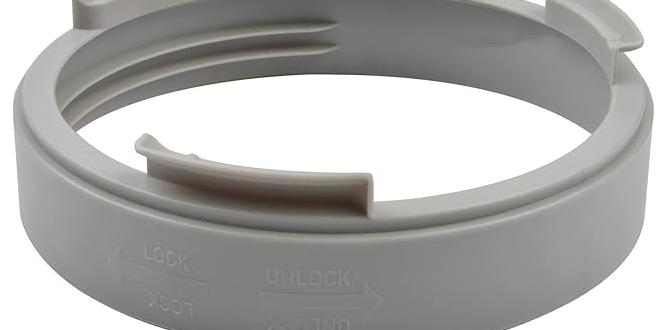Have you ever wondered how your devices stay powered? One important part of that is the charge voltage for lead acid batteries. These batteries are everywhere, from cars to backup power systems. When you plug in a lead acid battery to charge, did you know that the right voltage is key to keeping it healthy?
Imagine this: You’re on a road trip, and your car battery is low. A good charge voltage can mean the difference between a smooth ride and a stressful wait for a jump start. It’s fascinating how something so simple can play such a big role.
In this article, we will explore what charge voltage for lead acid batteries is all about. We will also learn why it matters. By the end, you’ll be ready to understand how to keep your batteries in top shape!
Optimal Charge Voltage For Lead Acid Battery Performance

Charge Voltage for Lead Acid Battery
Understanding the charge voltage for a lead acid battery is essential for proper use. The ideal charging voltage ranges from 2.3 to 2.4 volts per cell. Too low voltage may lead to undercharging, while too high can damage the battery. Did you know that overcharging can cause the electrolyte to evaporate? This can reduce the battery’s lifespan. Knowing the right voltage helps keep your battery healthy and lasts longer. Always check the manufacturer’s guidelines for the best results!Understanding Lead Acid Batteries
Composition and types of lead acid batteries. Common applications and usage environments.Lead-acid batteries are made of lead and lead oxide plates immersed in an acid solution. There are two main types: flooded and sealed batteries. Flooded batteries need maintenance, while sealed ones are easier to use. These batteries are common in many places. You can find them in:
- Cars
- Motorcycles
- UPS systems
- Golf carts
They work well in various environments, from hot deserts to cold regions.
What are common applications for lead-acid batteries?
Lead-acid batteries are used in many ways. They power vehicles and backup systems. Their reliability makes them popular choices in storage systems. They are essential for starting engines.
Importance of Charge Voltage
How charge voltage affects battery performance. Consequences of incorrect charge voltage levels.The right charge voltage is key for lead acid batteries. It helps them work well and last longer. If the voltage is too low, the battery won’t charge fully. This can lead to a weak battery. If it’s too high, it can cause damage, making the battery unsafe. Always check your charge voltage!
- Correct voltage boosts battery life.
- Low voltage leads to incomplete charging.
- High voltage can cause battery damage.
- Both can affect performance.
What happens if you charge a lead acid battery incorrectly?
Incorrect charging can hurt the battery. It may not work right or could even burst. Always use the right voltage for safety and best performance.
Optimal Charging Voltage Levels
Recommended voltage ranges for flooded, AGM, and gel batteries. Factors influencing optimal charging voltage.Correct voltage is key for charging lead acid batteries. Here are the recommended levels:
- Flooded batteries: 2.4 to 2.45 volts per cell.
- AGM batteries: 2.3 to 2.4 volts per cell.
- Gel batteries: 2.25 to 2.3 volts per cell.
Factors that influence optimal charging voltage include temperature and battery age. Hot weather can raise voltage needs, while older batteries may require less. Understanding these points helps keep your batteries healthy. Proper care leads to longer usage and better performance.
What factors affect charging voltage?
Charging voltage is affected by battery type, temperature, and age. Each battery type needs different voltage for charging. Higher temperatures can make batteries work harder, changing their voltage needs. Plus, older batteries may not need as much charge.
Monitoring Charge Voltage
Tools and equipment for measuring charge voltage. Signs of improper charging and how to address them.To check the charge voltage, you need some handy tools! A multimeter is your best friend here; it measures voltage like a pro. If you see low readings, that could signal trouble. Watch for signs like strange noises or a battery that is hotter than a summer day. Address these issues quickly. Here’s a quick look at the tools and their uses:
| Tool | Purpose |
|---|---|
| Multimeter | Measures voltage |
| Battery Tester | Checks battery health |
| Hydrometer | Tests electrolyte density |
Nothing says “I need help” like a battery that refuses to charge! If it’s acting up, it might just need a little more TLC or a trip to the nearest battery guru.
Safety Precautions While Charging
Essential safety measures to take during charging. Common hazards and how to avoid them.Always follow safety rules while charging batteries. Here are some key tips to help you stay safe:
- Charge in a well-ventilated area. This helps avoid dangerous gases.
- Keep flammable items away from the charger.
- Use gloves and goggles for protection.
- Never leave the battery unattended while charging.
- Check for leaks or damage before charging.
By taking these steps, you can prevent accidents and keep everything safe while working with battery charge voltage for lead acid battery.
What are common hazards while charging batteries?
Common hazards include overheating, gas buildup, and possible short circuits. Always monitor the battery closely to avoid these dangers.
Environmental Factors Affecting Charge Voltage
Impact of temperature and humidity on charging. Best practices for charging in varying environmental conditions.Temperature and humidity can stir up a lot of trouble when charging batteries. For example, high temperatures may cause the voltage to rise too much, like a soda can left in the sun. On the other hand, cool temperatures can slow down the charging process, making it feel like waiting for your slowest friend to catch up. Here are some best practices:
| Temperature Range | Best Charging Practice |
|---|---|
| 32°F to 60°F | Charge slowly |
| 60°F to 80°F | Standard charging |
| Above 80°F | Monitor closely |
Also, if the humidity is high, it can cause corrosion. No one wants a corroded battery—it’s like finding moldy bread in your snack stash. So, check the weather before charging and keep your battery safe!
Maintaining Charge Voltage for Longevity
Tips for maintaining optimal charge voltage over time. Common maintenance practices for lead acid batteries.Keeping the right charge voltage is key to making your lead acid battery last longer. Think of it as giving your battery a cozy blanket; it needs just the right temperature! Aim for a voltage between 12.4 to 12.7 volts when fully charged. Regularly check the connections and keep terminals clean; nobody likes a dirty neighbor! Adding distilled water can also help. Remember, proper care means fewer battery drama moments!
| Tip | Advice |
|---|---|
| Check Voltage | Keep it between 12.4 to 12.7 volts. |
| Clean Connections | Wipe down terminals regularly. |
| Add Water | Use distilled water to maintain fluid levels. |
Troubleshooting Charging Issues
Identifying common charging problems and solutions. When to seek professional help.Charging problems can feel like trying to find a needle in a haystack. Common issues include a dead battery or a faulty charger. If your battery struggles to hold a charge, you might need a new one. Don’t let it sit in a corner like a lost puppy! If all else fails and sparks aren’t flying, seek professional help. Sometimes, even superheroes need a sidekick!
| Problem | Solution |
|---|---|
| Battery won’t charge | Check connections and charger |
| Slow charging | Check charger voltage levels |
| Battery drains quickly | Test battery health |
Typically, if you find yourself in a tangle, consulting an expert can save the day. Remember, sometimes it pays to call in a pro!
Conclusion
In conclusion, understanding the right charge voltage for lead acid batteries is crucial. You should charge them between 13.8 and 14.4 volts. This helps keep your battery healthy and performing well. Always check your battery’s specific needs. Next time you charge, remember these tips to ensure a longer battery life. For more information, keep reading or ask an expert!FAQs
Sure! Here Are Five Questions Related To The Charging Voltage For Lead-Acid Batteries:1. What is the charging voltage for lead-acid batteries? The charging voltage for lead-acid batteries is usually around 14.4 to 14.7 volts. 2. Why do we need to charge lead-acid batteries? We charge lead-acid batteries to make sure they have enough power to run things. 3. What happens if the voltage is too low? If the voltage is too low, the battery won’t charge fully, and it can run out of power early. 4. What happens if the voltage is too high? If the voltage is too high, it can damage the battery and make it stop working. 5. How long should you charge a lead-acid battery? You should charge a lead-acid battery for about 8 to 12 hours, or until it’s full.
Sure! Please provide the question you’d like me to answer.
What Is The Recommended Charging Voltage For A Fully Discharged Lead-Acid Battery?The recommended charging voltage for a fully discharged lead-acid battery is about 12.6 volts. This helps the battery fill up with energy safely. You should use a special charger made for lead-acid batteries. Always check the charger to make sure it’s set correctly!
How Does Temperature Affect The Charging Voltage Requirements For Lead-Acid Batteries?Temperature changes can affect how we charge lead-acid batteries. When it’s cold, we need a higher charging voltage to fill the battery. In hot weather, we should use a lower voltage to avoid damage. So, as temperatures change, we adjust the charging voltage to keep the battery safe and happy.
What Are The Differences In Charging Voltage Settings For Flooded Lead-Acid Batteries Versus Sealed Lead-Acid (Agm Or Gel) Batteries?Flooded lead-acid batteries need a higher voltage to charge. They usually charge around 14.4 to 14.8 volts. Sealed lead-acid batteries, like AGM or gel, need lower voltage, about 13.6 to 14.4 volts. This helps keep them safe and healthy. So, remember, the type of battery changes how much voltage you should use when charging.
What Are The Potential Risks Of Using An Incorrect Charging Voltage On A Lead-Acid Battery?Using the wrong charging voltage on a lead-acid battery can be dangerous. If it’s too high, the battery can overheat and even explode. If it’s too low, the battery won’t charge fully and might stop working. This could also shorten the battery’s life. Always check the right voltage to keep your battery safe!
How Can One Determine The Optimal Charging Voltage For A Specific Lead-Acid Battery Application?To find the best charging voltage for a lead-acid battery, you can check the battery’s label. It usually gives the right voltage. You can also look at the battery’s user manual for extra help. If you’re unsure, asking an adult or a battery expert is a good idea. This way, you’ll help the battery last longer and work better!






